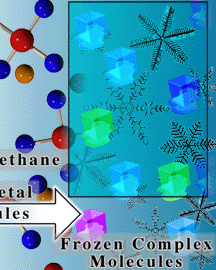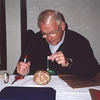This is a drawing which illustrates the composition of Neptune's atmosphere relative to possibilities for other planets.
Click on image for full size
An Overview of Neptune's Atmospheric Composition
The atmosphere of Neptune is very similar to that of Uranus, and unlike that of Saturn and Jupiter. On Jupiter and Saturn, the atmosphere is mostly composed of the simple molecules hydrogen and helium. The atmosphere of Neptune contains a greater percentage of the more complex molecules such as methane gas, ethane gas, acetylene, and diacetylene. These constituents collectively are known as "hydrocarbons".
Hydrocarbons form hazes of smog high in the upper atmosphere. There are clouds of methane ice low in the troposphere.
One of the reasons these molecules are the primary constituents of the atmosphere of Neptune is that Neptune evolved from the more complex hydrocarbons, and ices, rather than solely from hydrogen and helium.
You might also be interested in:
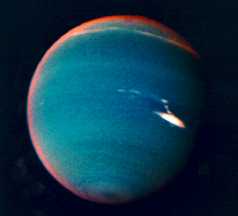
This image of Neptune uses false colors to bring out the hazes of smog, which can be seen in red along the limb of Neptune, at the edge of the picture. These hazes of smog are found at very high altitudes,
...more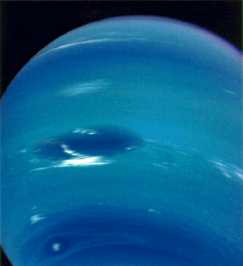
Atmospheres of the giant planets have definitely evolved from their formation out of the primitive solar nebula. How much they have evolved remains to be seen, however. Because of their enormous gravity,
...more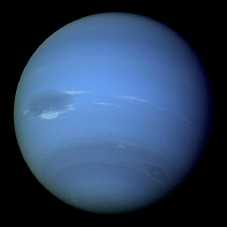
The air of Neptune is extremely cold, with temperatures of -270 degrees to -380 degrees. The air is made of complex molecules, the same sort of molecules that we see coming out of cars on earth in the
...more
Like Jupiter and all the giant planets, Neptune's appearance shows a striped pattern of clouds. Other cloud shapes seen over time include a small dark spot, the "scooter" and the Great Dark Spot. The Great
...more
Neptune's atmosphere shows a striped pattern of clouds. This cloud pattern is very similar to that of Jupiter and Saturn. Neptune even has a Great Dark Spot similar to Jupiter's Great Red Spot. The structure
...more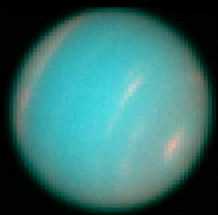
This image shows the new Great Dark Spot of Neptune, which was discovered using the Hubble Space Telescope. The image shown here, shows a "hole" in the clouds of Neptune in pink, in the northern hemisphere,
...more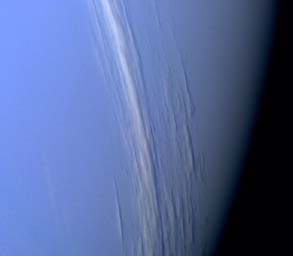
This image shows some cirrus clouds, extending for many kilometers across the disc of Neptune. These clouds are somewhat high up, for they can be seen to cast shadows on the lower clouddeck, which is 35
...more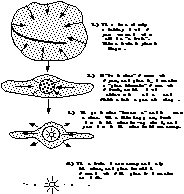
The solar system contracted, or shrank together, out of a spinning cloud of hydrogen and helium gas. This spinning cloud had a certain amount of momentum, which caused it to flatten, somewhat the way a
...more


